Foot and Ankle Activation Exercises can help athletes improve their speed, power and agility, which will lead to greater success in soccer, basketball, football, running and many more sports. Incorporate Foot and Ankle Activation Exercises into your Prehabilitation Program and see a change in the way that you perform.
The Importance of the Foot and Ankle
The foot and ankle work together to form the foundation of most Human Movement and their ability to establish stability and transfer Kinetic Energy to the rest of the body ultimately has a large impact on performance.
Any biomechanical dysfunction in the foot or ankle will severely impact how an athlete can perform in certain activities or sports. For example, a basketball player that experiences a sprained ankle will be severely limited in ability, if not removed from the game.
The Foot and Ankle serve as:
• Point of contact in ‘locomotion’ (traveling) movements, such as walking, running or jumping.
• Foundation of all ‘standing’ movements, such as throwing a football, punching a heavy bag or performing many different weight lifting exercises including the squat, deadlift, clean, jerk and more.
Dysfunction Impairs Performance
Not only will injuries impact how an athlete performs, subtle biomechanical dysfunctions or deficiencies can impact the overall performance, especially in regards to coordination, balance, speed, power or agility.
A lack of stability in the Foot and Ankle will negatively affect an athlete’s performance. For example, when a soccer player is attempt to defend against a player that is ‘cutting’ to the side with the ball, a lack of stability in foot or ankle will slow down the speed in which the defender can change directions. Consequentially, the delayed response in this athlete’s attempt to change direction will allow the other player to get past the defender and possibly score.
Biomechanical deficiencies, including the lack of stability, will negatively impact an athlete’s agility, speed, coordination, balance and power.
Activation Assists Performance
Activation exercises improve an athlete’s performance by ‘wakening’ neuromuscular connections that will help recruit more muscles to enhanced coordination, react faster, effectively manage balance and deliver more force that creates higher levels of speed and power.
Activation Exercises help strengthen neuromuscular connections.
How Activation Exercises Work
There are billions of muscle fibers in the body that are all connected to the Central Nervous System (CNS) through a network of neurons. Within the muscles are specific sensory neurons called ‘Proprioceptors’ that monitor tension in the body and send messages back and forth between the muscle fibers and CNS.
Activation Exercises help to stimulate the Proprioceptors, sensory neurons, that command muscle fibers to contact and release.
Communication Matters
Human Movement is dependent on the ability of the Central Nervous System (CNS), including the Proprioceptors, to send and receive messages. If the CNS cannot communicate with specific muscle fibers in a clear and fast manner, there are consequences in how the body can move. When messages in the CNS are slowed down or disrupted, the body loses efficiency in coordination, movement, speed, balance and more.
Human Movement is dependent on communication of the CNS.
Repetition Improves
There is a long-standing principal of ‘Use It or Lose It,’ which applies to the CNS and Human Movement. The ability of the CNS to communicate effectively and create Human Movement efficiency is correlated to how often specific neurological pathways are used. In other words, the body gets better at the movements it practices most often and loses the ability to perform the other movements that it does not practice.
Neuromuscular connections grow stronger with repetition.
Larry Bird
In one of his seminars, Anthony Robbins recalls how difficult it was for Larry Bird to film a Pepsi commercial back in the 1980’s. The commercial called for Bird to miss a jump shot. Yet, Bird was so proficient at shooting a basketball since he did it endlessly on a daily basis, that it took about nine shots before Bird could miss. The funny thing was that Bird was trying to miss on each one and just couldn’t because he ‘lost’ the ability to miss.
Activation Exercises help athlete’s keep their full physiological ‘potential’ throughout their season and careers.
Benefits of Activation Exercises-
Activation Exercises strengthen neuromuscular connections that are responsible for creating Human Movement. More specifically, Activation Exercises improve:
Coordination
Balance
Speed
Power
Reaction Time
Agility
Activation Exercises help ‘reconnect’ an athlete to their full potential.
Performing Activation Exercises
An effective way of implementing Activation Exercises into your training program is by combining them with Mobility Exercises and Soft Tissue Therapy.
Recommended sequencing in a Prehabilitation Program:
Soft Tissue Therapy
Mobility Exercises including PNF Stretches
Activation Exercises
Stability Exercises
Strength and Conditioning Exercises
Effective Sequencing
The main goal of Activation Exercises is to help improve Human Movement on a holistic level through strengthen neuromuscular connections. Any improvement involving the neuromuscular connections will lead to improved stability (control) and accuracy as well as increased strength and endurance through more repetitions. Yet, all of these improvements can be eliminated due to any restrictions or limitations in the Soft Tissue or Mobility.
To ensure best results, practice Soft Tissue Therapy and improve Mobility before performing Activation Exercises.
Soft Tissue Therapy
In a shorten description, Soft Tissue Therapy helps the body to recover and move on a physiological level. Knots, adhesions and scar tissue are all signs of cellular trauma that will disrupt biomechanics and ultimately create compensation strategies that alter Human Movement. It is highly recommended to develop a soft tissue therapy practice in order to help restore one’s biomechanics and optimize movement.
Athletes compromise results and performance when training or competing with biomechanical limitations and compensation strategies in their movement.
To learn more about Soft Tissue Therapy – CLICK HERE
Mobility Exercises
Natural Movements refer to specific way the body is designed to move with perfect biomechanics and Range of Motion (ROM). Natural Movements offer the greatest longevity and functionality of Human Movement. However, the modern athlete lives in an environment that actually restricts Natural Movements on a consistent basis, which is why athletes need to practice Mobility Exercises.
Mobility Exercises help to improve the Range of Motion of the joints, reduce compensation or injury and restore an athlete’s ability to perform Natural Movements.
To learn more about Mobility – CLICK HERE
Improving the Effectiveness
Soft tissue therapy and mobility exercise will eliminate the physiological tension, pressure or tightness that can impede the transmission of neurological impulses through the body as well as restrict the biomechanics of specific joints after the correlating muscle fibers have been facilitated or ‘fired.’ Ultimately, soft tissue therapy and mobility exercises prepare the body’s physiology and joints for movement while Activation Exercises will improve the neuromuscular connections that initiate and coordinate movements.
Soft Tissue Therapy and Mobility Exercises help the effectiveness of Activation Exercises.
Putting It All Together
Here is a PreHab routine for Foot and Ankle Activation that include Soft Tissue Therapy and Mobility Exercises.
Soft Tissue Therapy Exercises
Start with rolling the Hips, Quadriceps and IT Band in order to loosen up the soft tissue that may impede neuromuscular communication from the spine to the feet as well as help eliminate any knots or adhesions that may disrupt the biomechanics and cause different compensation strategies in movement.
Rolling the Hips
Use a variety of rolling technique to help smooth out the soft tissue.
Spend at least 30-45 seconds on each hip.
Rolling the IT Band
Continue to use various rolling techniques, including oscillating or cross-fibering, on the IT Band. Prioritize tight or stiff areas.
Spend at least 30-45 seconds on each leg.
Rolling the Quadriceps
Move on to the quadriceps and continue to roll with the varying techniques, including ‘articulating the knee’ as you roll.
Spend at least 30-45 seconds on each leg.
Rolling the Calf
Next, roll out the calf muscles and make note of where any large knots or adhesions exist that can be address more acutely with a ball. Practice a variety of rolling techniques on the calf, including oscillating and articulating the ankle.
Spend at least 45-90 seconds on each calf.
Ball the Foot
Roll out the soft tissue on the bottom of the feet with a golf ball. The size and density of a golf ball can effectively help separate the intricate muscles and tendons of the foot that have a tendency of bonding together as part of compensatory adaptation.
Spend at least 30-45 seconds on each foot.
Ball the Calf
Use a lacrosse ball or golf ball to address any knots or adhesions in the calf muscles and lower leg. Use a variety of techniques, including hatching, circling and articulating the ankle.
Spend at least 30-45 seconds on each calf.
Alternative Soft Tissue Therapy exercises for the foot:
Knuckle Twist
Finger Cross-Fiber Massage
Mobility Exercises
Plantar Fascia Stretch
After completing the soft tissue therapy, use your fingers to pull the toes and balls of the foot far away from the heel. Breathe deeply and relax.
Stretch each foot for 30-45 seconds.
Plantar Flexion Stretch
Place the tops of the toes on the ground and walk the hips forward until you can feel a stretch on the top of your foot. This stretch will help loosen the soft tissue that may slow down the action of your foot in Plantar (downward) Flexion.
Stretch each foot for 30-45 seconds.
PNF Calf Stretch
This mobility exercise can also serve to activate the musculature of the ankle and foot when you apply the PNF technique of Autogenic Inhibition, also referred to as Contract/Relax.
Place your forefoot flush up against a wall and wedge the heel into the floor. Try to make an equilateral triangle with your foot, wall and floor. Then straighten your knee and press your hips towards the wall.
Next, press your hips towards the wall and then slide from side to side, looking for any tight sensations in your foot or calf. Address tight areas first and apply the Contract/Relax technique.
Contract/Relax
Press your forefoot into the wall with about 1/4 of your strength and then relax. Continue to cycle through these ‘contract and relax’ phases without losing the tension in the stretch. Also, make sure to breathe and focus on the exhalations as this will help elicit a stronger parasympathetic tone of your nervous system and make the soft tissue release more.
Use the Contract/Relax technique on each leg and feel the musculature of your lower leg and foot turn on as your range of motion also increases.
Perform this stretch for 30-60 seconds on each calf.
Ankle Matrix
Place your hands on the wall at shoulder height and fully extend the elbows to straighten the arms. Then engage the abdominals to brace your spine in neutral alignment and walk the feet backwards until your body is aligned on an angle from head to heel. Press both heels firmly into the ground before lifting one knee up to hip height.
Next, drive the raised knee across the body and towards the wall on an angle while you keep the opposite heel firmly rooted into the floor. Then return back to start and then drive the knee outside and towards the wall as you keep the opposite heel firmly rooted into the floor.
Repeat several times: driving the knee towards the wall while keeping the rear foot completely rooted into the floor. This exercise is designed to increase the total Range of Motion of the bottom ankle.
Practice this exercise for 15-30 seconds on each leg.
Hip Extension
Kneel on the floor and hold a pole to your back. Press the back of your head, the back of your heart and your tailbone firmly into the pole. Then pull the belly button in towards the spine to engage the abdominals and brace your spine. Next, lunge the hips as far forward as possible to loosen up the Hip Flexors, which can affect the calves if tight. The body has a tendency to overuse the calves and ankles in an attempt to compensate for tight Hip Flexors. Thus, restore length to the Hip Flexors will help to restore biomechanical function to the foot and ankle. Lunge forward, breathe deeply and relax.
Stretch each Hip Flexors for 30-60 seconds depending on the tightness.
Activations Exercises
Once you have completed the Soft Tissue Therapy and Mobility Exercises, move on to the following Activation Exercises for the Foot and Ankle.
Towel Scrunch
This PreHab exercise will develop dexterity and activate the intricate muscle actions of the foot, which will provide a foundation for improved coordination and agility in addition to helping your posture and balance.
Place your foot on a towel with the forefoot just across the edge.
Next, pull the towel under the foot by scrunching or curling the toes and foot. Attempt to spread the toes as wide as possible to pull the towel in from the sides and use the forefoot to push the towel further back towards your heel.
Practice this exercise for 30-60 seconds on each foot.
Plantar Flexion Against Band
Wrap a resistance band around the forefoot and hold on to it with you hands. Pull the band taunt, but not too tight at first. Increase resistance as you progress through reps.
Next, attempt to point the toes as far away as possible from the shins and then slowly return to the original starting position. Perform the reps slow at first and then add speed in increments as you also increase the resistance.
Perform 10-15 reps on each foot.
Dorsi Flexion Against Band
Anchor the band around a pole or heavy bench and wrap one end around the top of the foot. Make the band taunt, but not too tight.
Next, pull the toes back towards the shins as far as possible and then slowly return to the original starting position. Perform the reps slow at first and then add speed in increments as you also increase the resistance by moving further away from the pole or bench.
Perform 10-15 reps on each foot.
Inversion Against Band
Wrap a resistance band around the forefoot of one foot and then spiral the band around the inside of the calf before anchoring the band on the outside of the knee.
Next, attempt to press the toes as far away from the shin as possible while also turning the sole of the foot in towards the mid-line or inside of your body. Then slowly return the foot to the original starting positions and begin again.
Perform 10-15 reps on each foot.
Eversion Against Band
Wrap a resistance band around the forefoot of one foot and then spiral the band around the outside of the calf before anchoring the band on the inside of the knee.
Next, attempt to press the toes as far away from the shin as possible while also turning the sole of the foot out away from the mid-line or inside of the body. Then slowly return the foot to the original starting position and begin again.
Perform 10-15 reps on each foot.
Compass Reaches
Stand on one foot and reach the opposite foot in every major direction according to a compass: North, East, South and West as well as Northeast, Southeast, Southwest and Northwest. This exercise will activate the hip, ankle and foot simultaneously and also test your body’s ability to coordinate balance in eight different positions.
When reaching the foot in each direction, keep the foot as close to the ground as possible and return to the center position after each reach. Also, attempt to pause momentarily at the farther end of your reach to stimulate the neuromuscular system even more.
Reach in all 8 directions 3-5 times with each foot.
Single-Leg Heel Lift
Stand on one foot and lift the opposite knee up to hip height. Reach the arms forward towards the horizon and look straight ahead. Next, press down into the forefoot and lift the standing heel off the ground as far as possible while maintaining balance. Then lower the heel back down to the floor under control. Repeat several more time and practice a variety of tempos, such as ‘ and down up on a 5 count’, as well as some isometric holds at the top.
Advanced Version: Eyes Closed- for further stimulation of the Proprioceptors in the lower leg and foot, try this exercise all over again with the eyes closed.
Perform 10-15 reps on each leg.
Single-Leg Rotation
Stand on one leg with arms parallel to the ground and palms pressed together. Lift the opposite knee to hip height and establish balance.
Next, rotate the arms 45 degrees to the left and then 45 degrees to the right while you keep your eyes on your hands throughout the entire movement. Stay as relaxed as possible during this exercise and allow the proprioceptors of your leg and foot activate and help maintain balance. If you fall or lose balance, it only means that you should practice this movement more often to keep the skill of ‘balance’ fresh for your body. Also, try to press your pinkie toe into the ground to help create more lateral stability in the standing leg.
Advanced Version: Eyes Closed- for further stimulation of the Proprioceptors in the lower leg and foot, try this exercise all over again with the eyes closed.
Rotate from side-to-side for 15-30 seconds on each leg.
Single-Leg Toe Touch
Stand on one foot and reach down to the touch the toes with the opposite hand while maintaining balance. Reach the opposite heel back towards the horizon and stay long through the spine and torso. Once your fingers touch the toes, return to standing and attempt to maintain your balance. When touching the toes, look at the toes and when returning to standing, shift your focus back to the horizon.
Perform 5-10 reps on each leg.
Forefoot March
Stand tall, lift the chest and focus the eyes on the horizon you walk forward and only use the forefoot to make contact with the ground. Keep the ankles extended as much as possible and attempt to keep your spine vertical in relation to the floor. This exercise will also help to develop the forefoot strike for running, which is used in the popular POSE Method.
March for 15-30 steps for 1 or 2 sets.
Ankle Hop
Start in the same position as the Forefoot March: standing tall, chest lifted and the heels completely off the ground. Next, start to hop forward without allowing your heels to touch the ground. Pull the belly button in towards the spine to help stabilize the torso and hips. Attempt to hop using only the ankles to generate the movement. In other words, try to keep the knees straight as well as the hips while hopping. Also, practice hopping in different directions, e.g. forward, backwards and lateral.
Perform 15-30 hops in each direction.
Ankle Box Hop
Before starting, it is best to draw a box on the floor with the sides approximately 6-12 inches long. An alternate option is to place a cone on the floor and hop around the cone. This exercise will help you to develop greater levels of agility and the ability to quickly change direction.
Start at the corner of the box and stand tall with the heels off the ground. Next, hop around the box the best that you can only using the ankles. Try not to let your knees or hips bend. Instead, forcefully extend through the ankles and push the ground away, even when changing directions.
Hop around the box for 3-5 times in each direction or for time: 10-30 seconds.
Single-Leg Ankle Box Hop
Just as with the Ankle Box Hop, it is best to draw a box on the floor with the sides approximately 6-12 inches long. An alternate option is to place a cone on the floor and hop around the cone. This exercise will strengthen your single-leg stability and agility, which will translate well into many sports.
Start at the corner of the box and stand on one foot with the heel off the ground. Next, hop around the box the best that you can only using the ankle to move your body. Try not to let your knee or hip bend. Instead, forcefully extend through the ankle and push the ground away, even when changing directions.
Hop around the box for 3-5 times in each direction or for time: 10-30 seconds.
Emphasized Turn-Over Run
Another way to activate the neuromuscular system of the lower leg and foot is to run with an emphasis on the turnover rate of your foot in your stride. In other words, attempt to pull the foot off the ground as quick as possible on each step.
In many cases, emphasizing the turnover will shorten your stride or interrupt your normal rhythm. Yet, the benefit of pulling your foot off the ground as fast as possible will help develop a faster stride in the long run as the foot and lower leg will adapt to an increase in elastic energy that is created in this exercise. When the foot is deliberately pulled up from the ground, additional ground reaction forces will be absorbed by the foot and calf as there is a kinetic cost at pulling the foot up before the natural cycle of your stride is complete. This exercise uses that kinetic cost of additional force to recruit more neuromuscular support, and thus activate more of the musculature in the foot and lower leg.
While running, turn your feet over as fast as you can and deliberately attempt to spend as little time with your foot in contact with the ground. Do not place concern on how fast you can run in terms of distance. Instead, focus on increasing the speed in which you lift your feet and turn your feet over as quickly as possible.
Practice a quick Turn Over stride for a specific number of strides (50), a set distance (400m) or time (30 seconds).
Unstable Surfaces
Performing balance related movements on unstable surfaces would also serve to stimulate the proprioceptors in the soft tissue and activate more neuromuscular connections. Here are some Activation Exercises performed on unstable surfaces.
Types of Unstable Surfaces:
• Balance Pad
• Dyno Disc
• Folded Towel
• Sand
Single-Leg Heel Lift on an Unstable Surface
Revisiting the Single-Leg Heel Lift, but this time while performing the exercise on an unstable surface.
Stand on one foot and lift the opposite knee to hip height. Next, press into the forefoot and attempt to lift the standing heel up into the air while maintain balance. This exercise will be much harder to perform on an unstable surface, yet each attempted rep will yield more effect in regards to activating the neuromuscular connections of the foot and ankle.
Perform 5-10 reps on each leg.
Single-Leg Rotation on an Unstable Surface
Revisiting the Single-Leg Rotation exercise, but this time on an unstable surface.
Stand on one foot and lift the opposite knee up to hip height as you hold the arms out in front and press the hands together. Make sure that the arms are parallel to the floor and focus your eyes on your hands. Next, rotate the arms 45 degrees to each side as you attempt to maintain balance and continue to focus the eyes on the hands. Again, this exercise will be more difficult to perform, but very effective at stimulating the proprioceptors and activating the neuromuscular connections in the foot and ankle.
Rotate the arms for 15-30 seconds.
Single-Leg Toe Touch on an Unstable Surface
Revisiting the Single-Leg Toe Touch, but this time performing the exercise on an unstable surface as well.
Stand on one foot and reach down to touch the toes with the opposite hand while maintaining balance. Reach the opposite heel back towards the horizon and focus the eyes on the toes while touching. Then return to standing and shift the focus of the eyes back to the horizon while trying to maintain balance.
Perform 5-10 reps on each leg.
Technique Tip: Foot Tripod
The Foot Tripod is an effective mental technique to use when performing any of these exercises. Just imagine that the foot is a tripod with three points of emphasis.
Actively press into the:
• Big Toe
• Small Toe
• Heel
The Foot Tripod will help to create a more stable foot and ankle complex, which will help to generate more power and establish better control of balance while moving.
Off to the Races-
Now that you have plenty of tools to work with, go out there and practice these techniques and watch how they make a difference in the way that you perform in your sports or workouts. It may take time to develop mastery in these movements, but every time you are working with these exercises, you are providing your body will a larger platform to operate on and you will only get better the more you try! Plus, you can do these exercises almost anywhere! So, get started now!
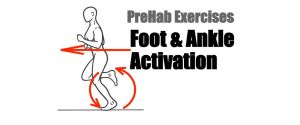
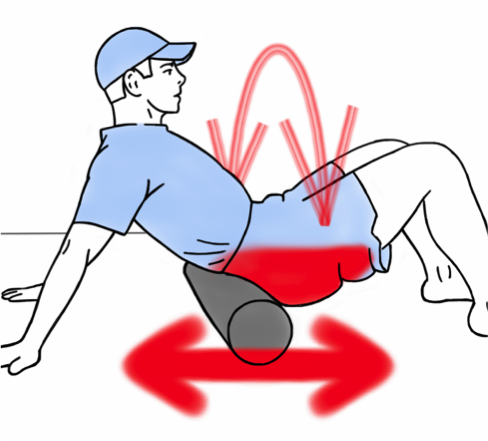
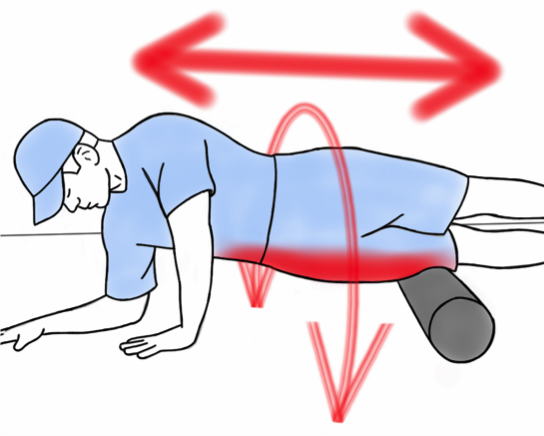
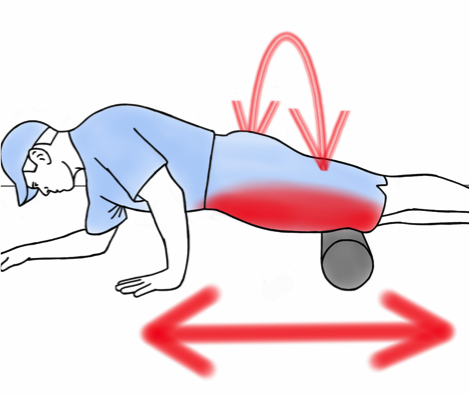
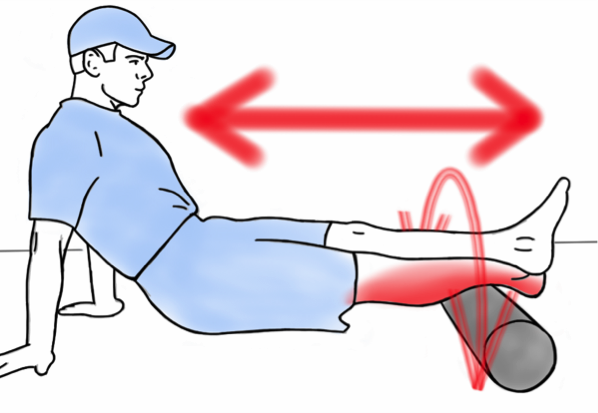
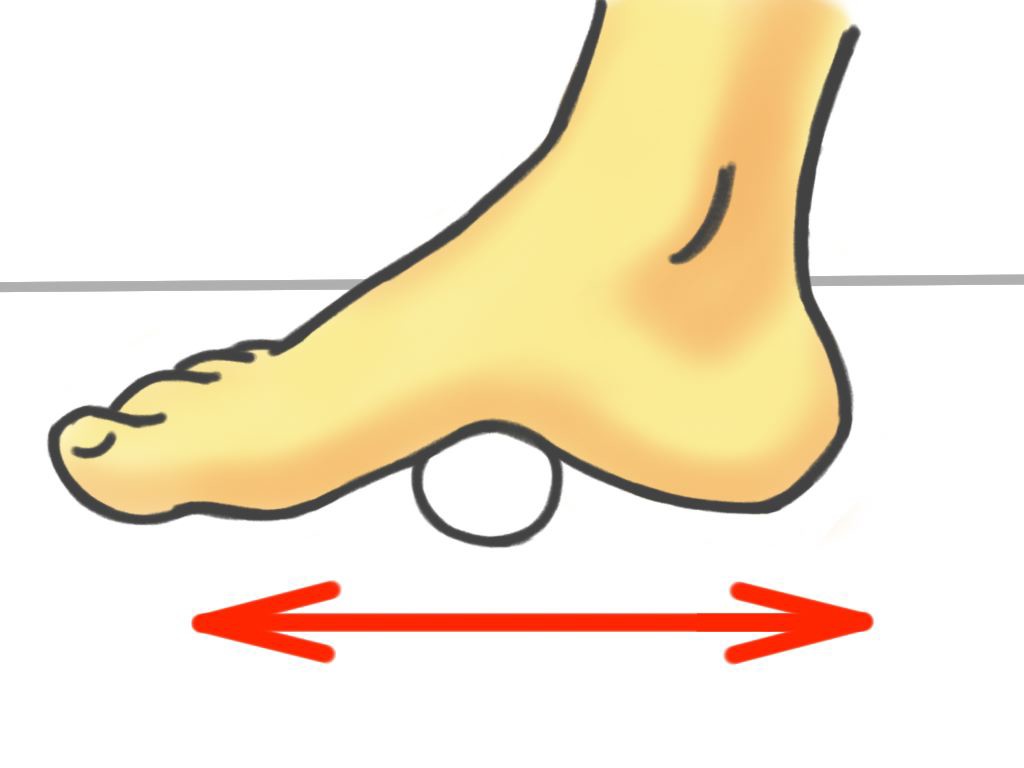
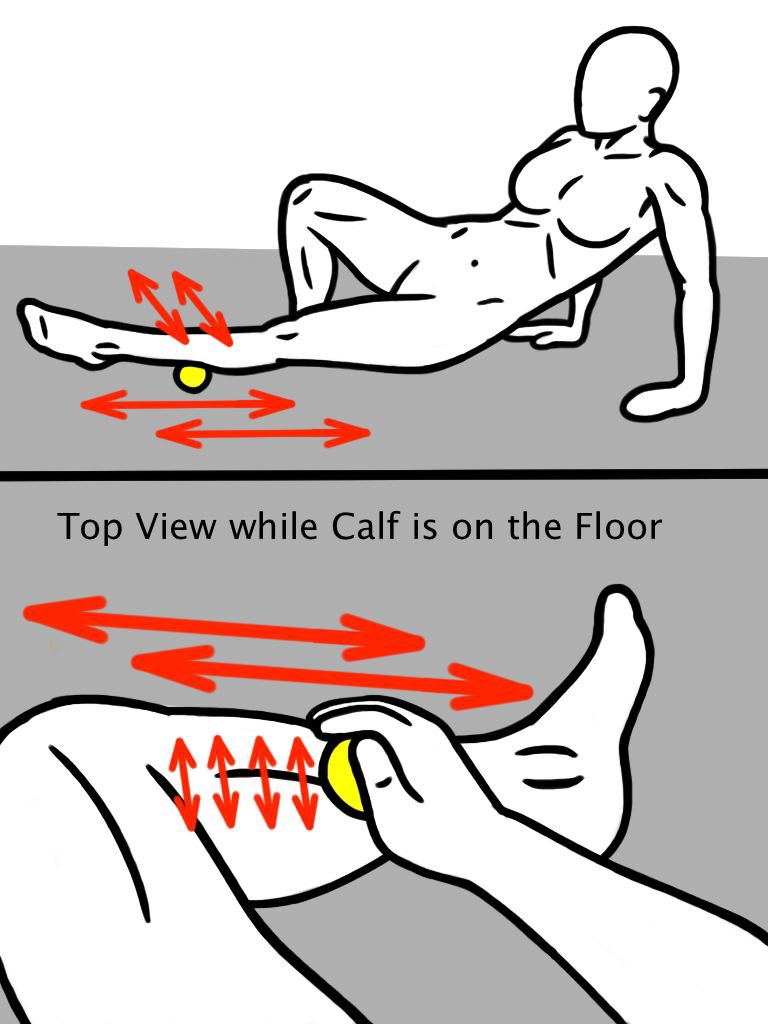
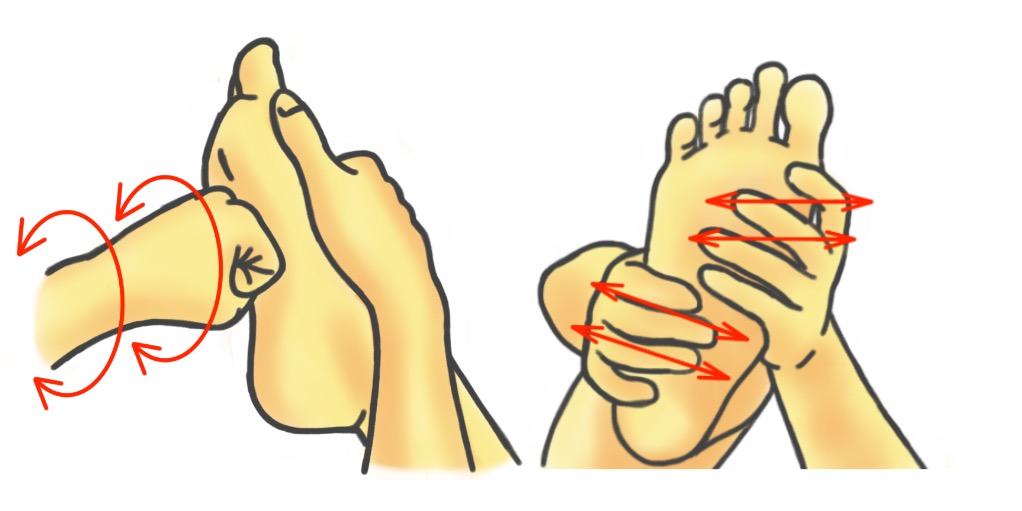
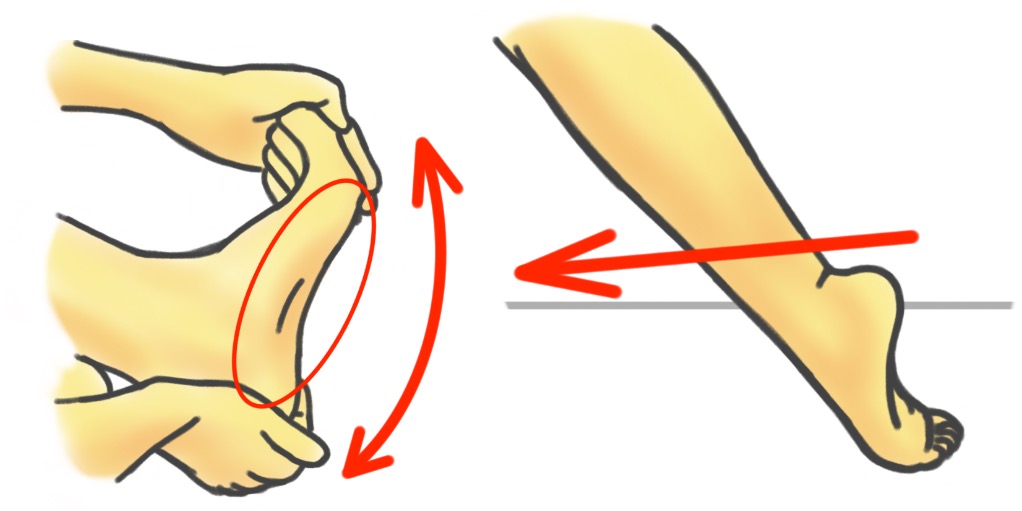
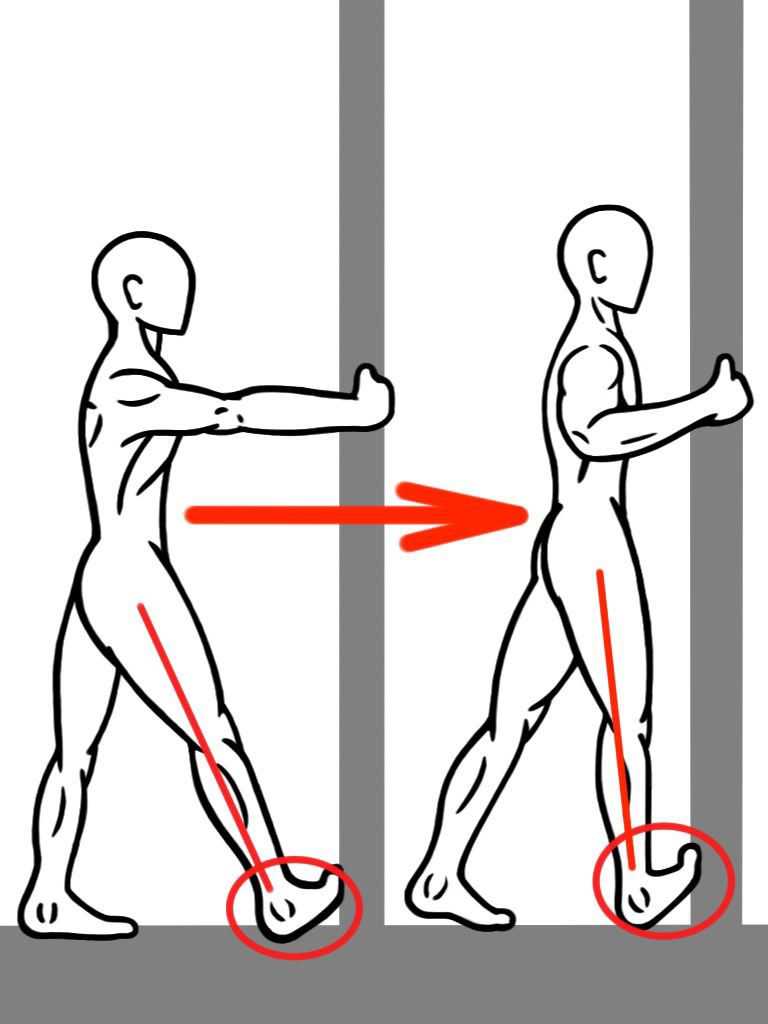
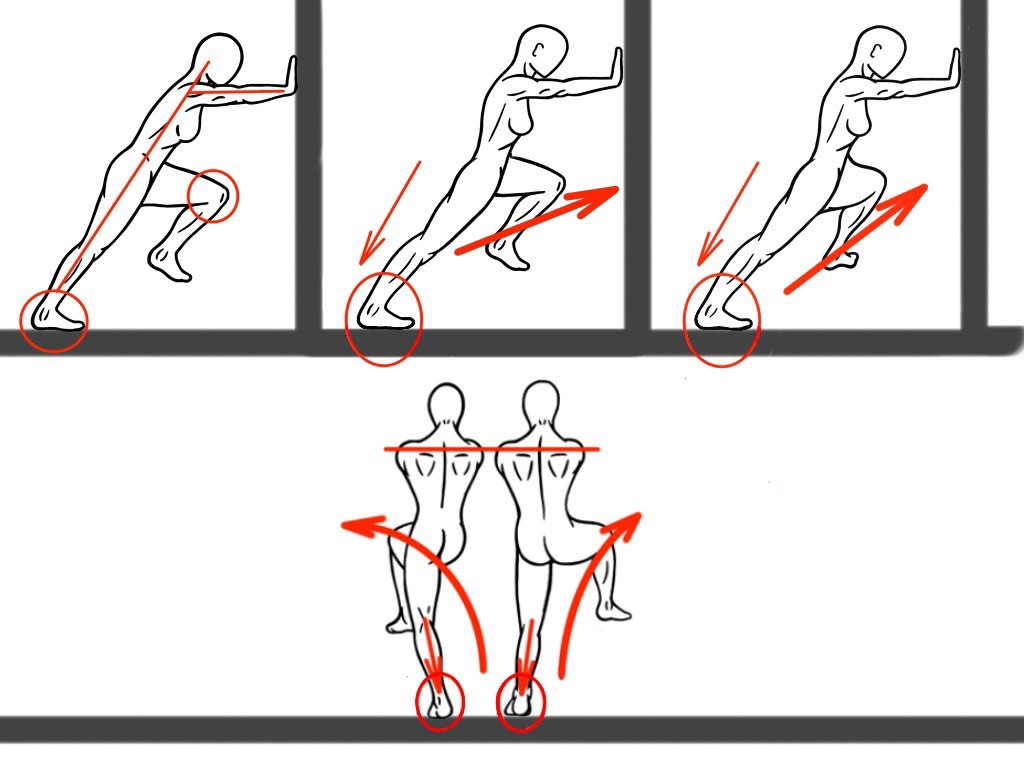
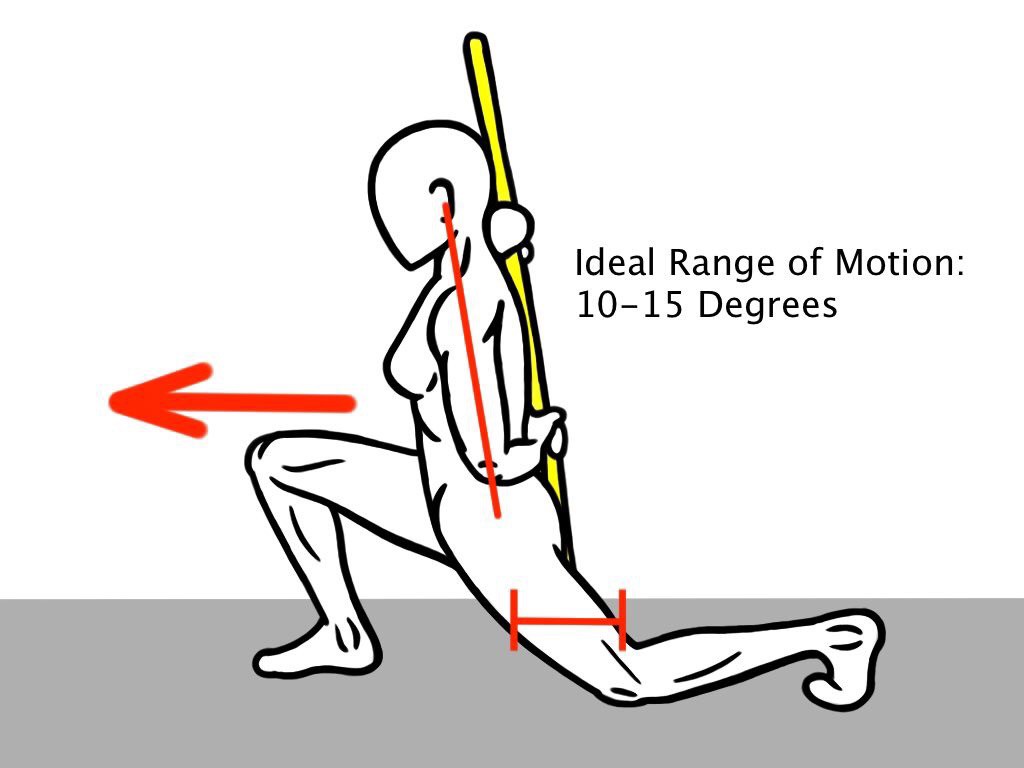

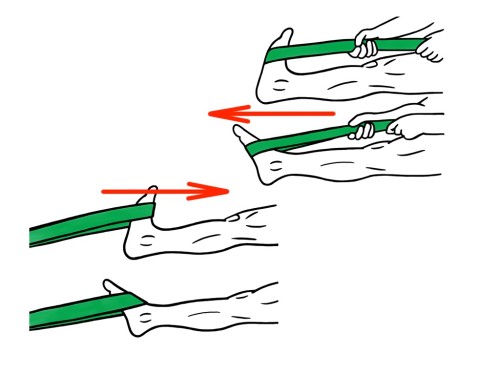
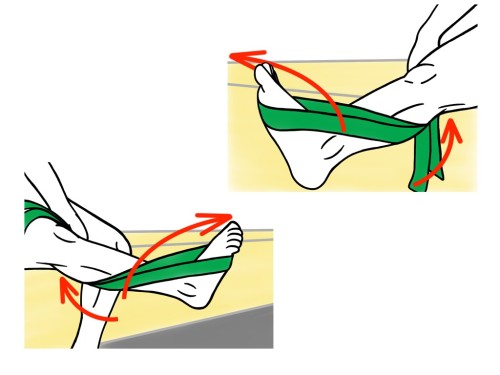
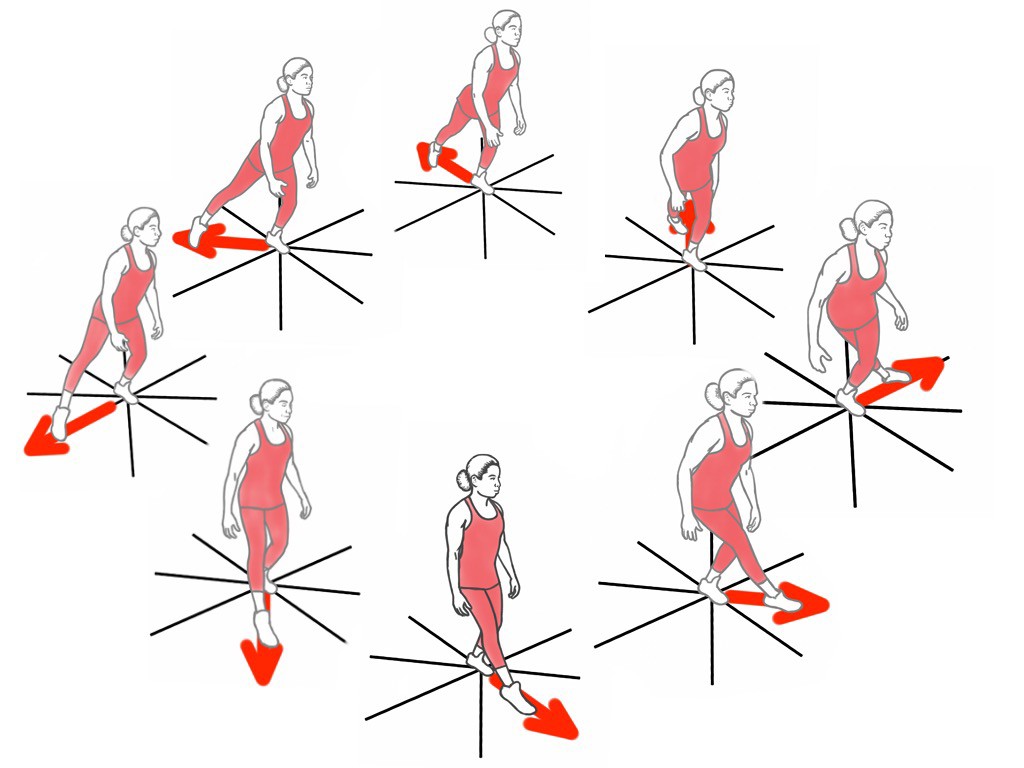
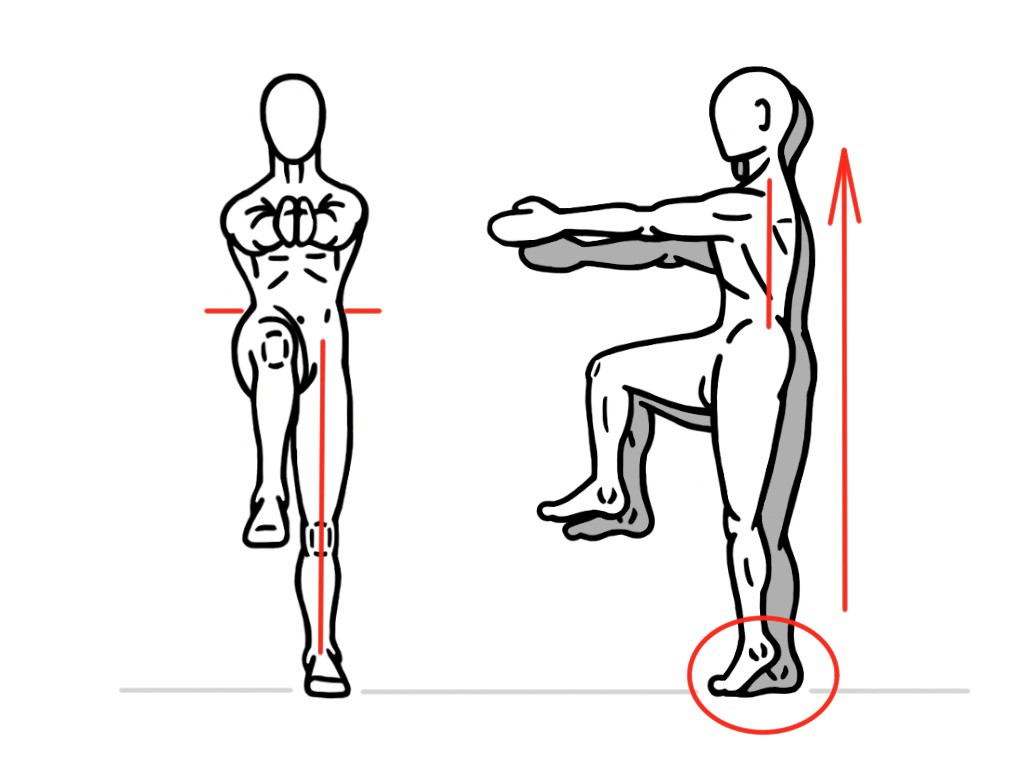
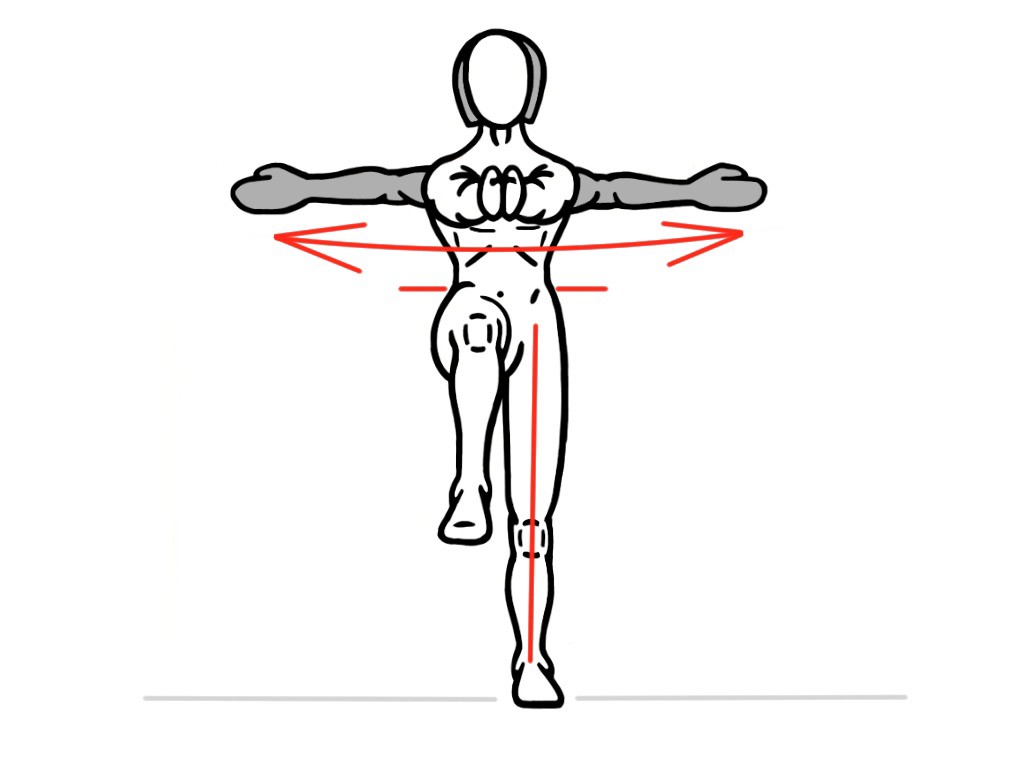
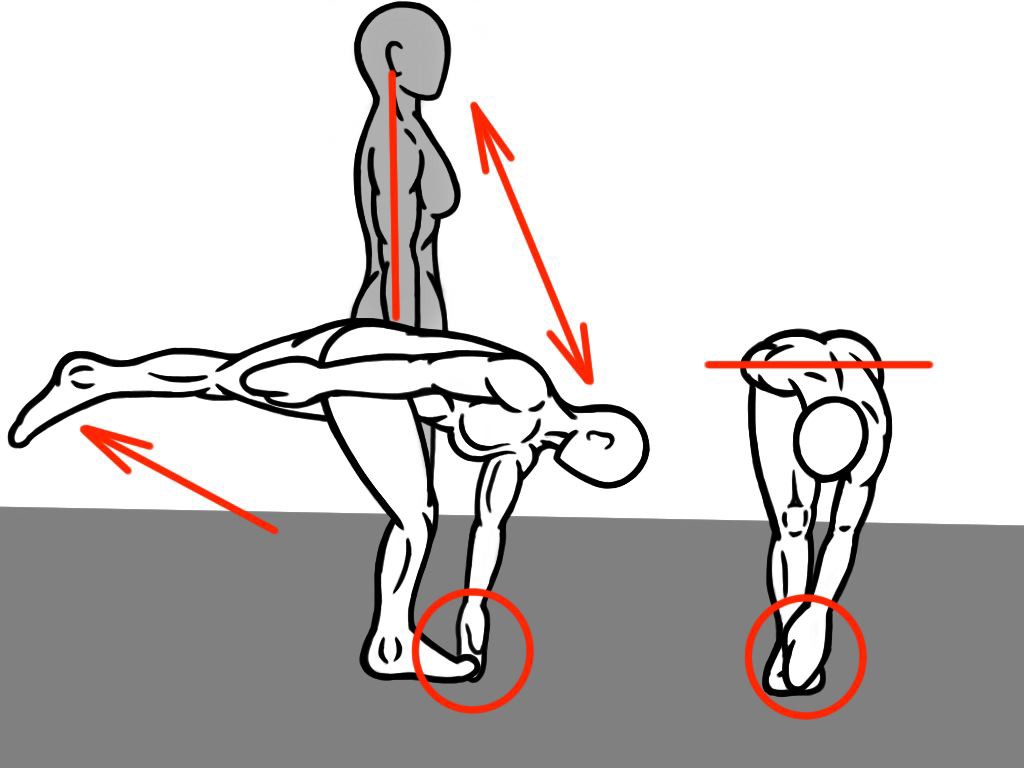



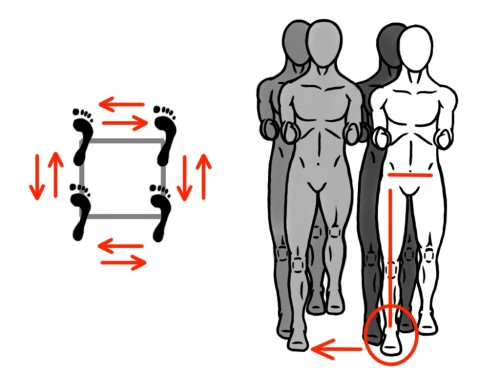
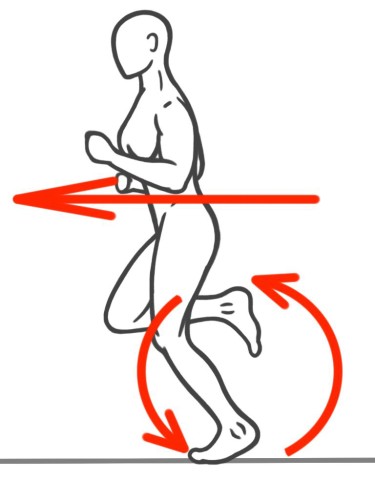
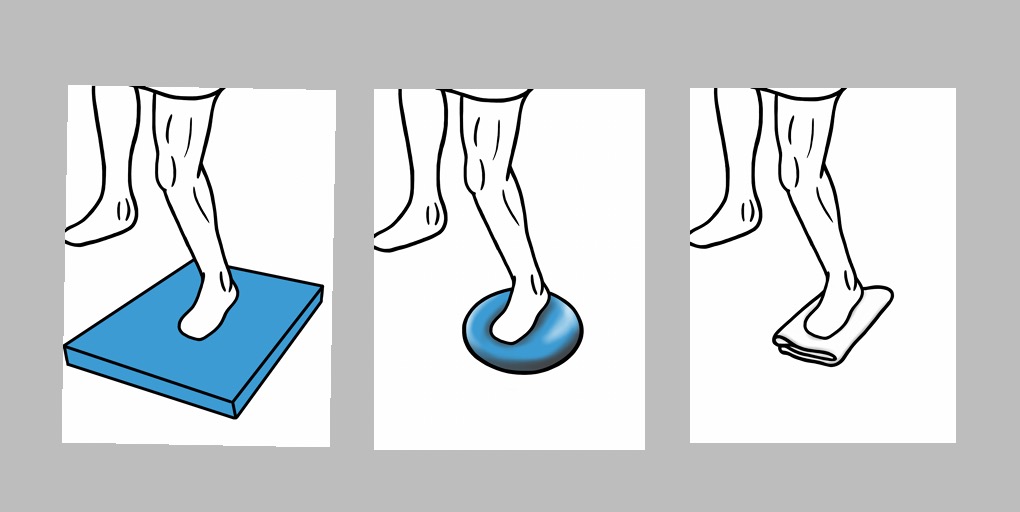
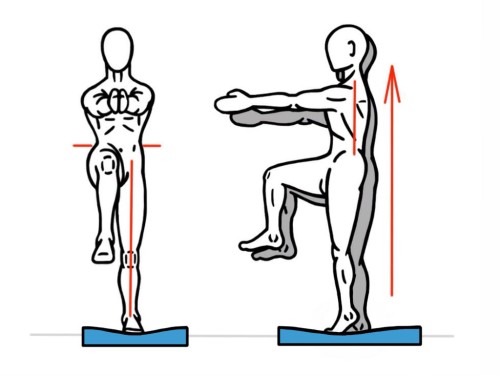
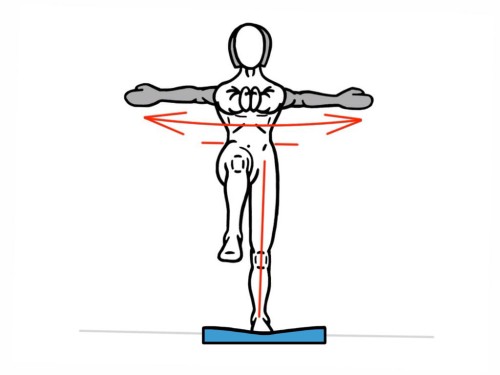
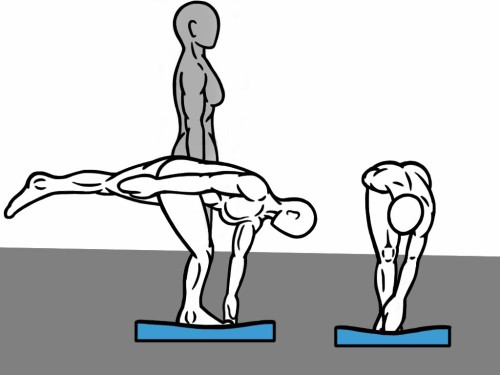
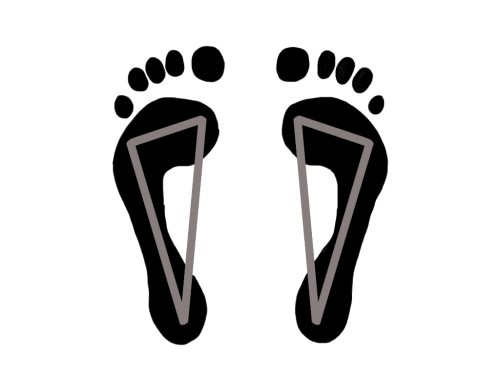
2 thoughts on “Foot and Ankle Activation”